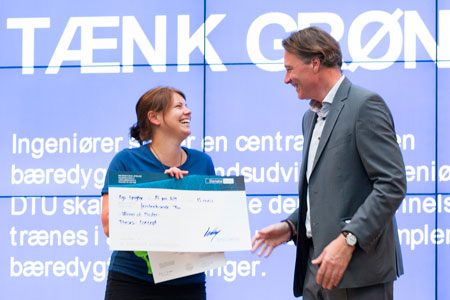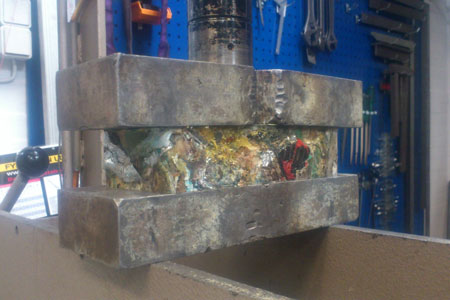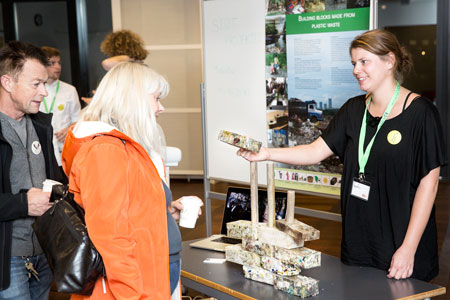A student project centred on plastic bricks has been given a real boost after Lise Fuglsang Vestergaard won a first prize at Grøn Dyst (Green Challenge) in 2014.
'If I hadn’t participated in Grøn Dyst, my project would probably have ground to a halt.'
Lise Fuglsang Vestergaard participated in the 2014 edition of Grøn Dyst and won the first prize of DKK 15,000 in the ‘Master's Thesis Concept’ category. In addition to providing a much-needed injection of capital, the victory brought recognition of her excellent idea of converting soft plastic waste into bricks.

'Grøn Dyst gave me the chance to present my project to a panel of critical judges. I have put my concept to the toughest test—and it came out on top. This has given me a firm belief that I’m on to something here,' relates Lise Fuglsang Vestergaard.
The idea for the project originally arose in 2013 when, as a master’s student on the Design and Innovation programme, Lise spent three months in India developing a refuse collection system for the extremely poor city of Joygopalpur. The Indian people are already committed to collecting refuse, as they can earn a few rupees by delivering it to recycling stations.
However, they generally leave soft plastic waste behind, because it is apparently difficult to find uses for it. As a result, this type of plastic is causing an increasingly significant refuse problem in India. When Lise noted how the clay-brick houses were almost washed away during the monsoon season, she quickly put two and two together. Would it be possible, she wondered, to use the plastic to make bricks—thus solving two problems simultaneously?
Withstands six tons of pressure
On her return to Denmark, Lise began experimenting with melting plastic into moulds in an ordinary oven. Today, she has developed a series of plastic brick prototypes. Subsequent testing at DTU has revealed that the bricks can withstand up to six tonnes of pressure.

The plastic brick can withstand up to 6 tonnes of pressure.
Lise Fuglsang Vestergaard has also succeeded in including foil-covered snacks bags in her brick concept. This is a major achievement, given that these packets make up a large proportion of the plastic refuse. Lise Fuglsang Vestergaard’s bricks can actually contain up to 60 per cent snacks bags without this compromising their strength.
Lise’s victory in the Grøn Dyst competition has given her renewed energy to continue working on the concept, and instead of spending the months following graduation as an MSc Eng seeking employment, Lise can now immerse herself full-time in her brick project. The next step will be to return to India.
The challenge is to raise capital for the trip. Lise aims to do so in partnership with the Danish NGO Inno Aid, which identified the original refuse collection project in Joygopalpur. Lise hopes that her Grøn Dyst victory can help open doors to financing under the auspices of Danida, for example, and she has also started collecting funds on her website.

Lise Fuglsang Vestergaard presented her 'plastic bag bricks' during the Culture Night event in Copenhagen this October.
In order to establish brick production in India, Lise has to come up with a method for melting the plastic that does not involve electricity—because there is no access to mains electricity in Joygopalpur. The only refrigerator in the little town is powered by a small, petrol-powered generator. Lise is therefore keen to test a solar powered barbecue.
'I’ve just received a solar powered barbecue. It’s hard to test it in Denmark at the moment because the weather is cloudy here in autumn, but I hope to test it properly on my next trip to India.'
The plastic brick project also provided the topic for Lise’s MSc thesis. She was awarded the highest mark for her work.
Article in DTUavisen no. 9, November 2014.